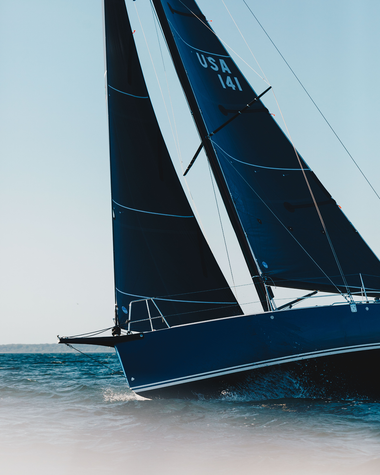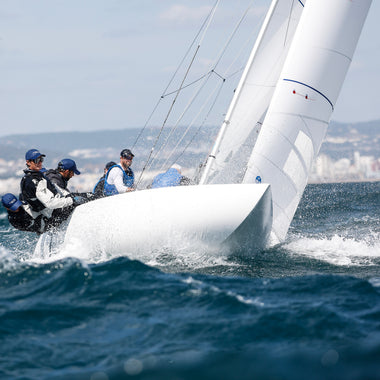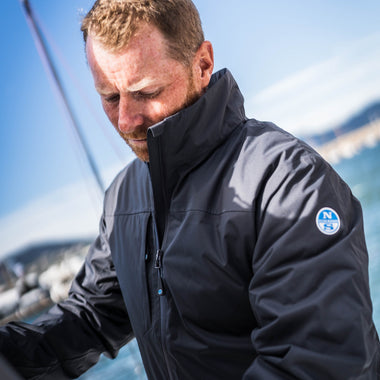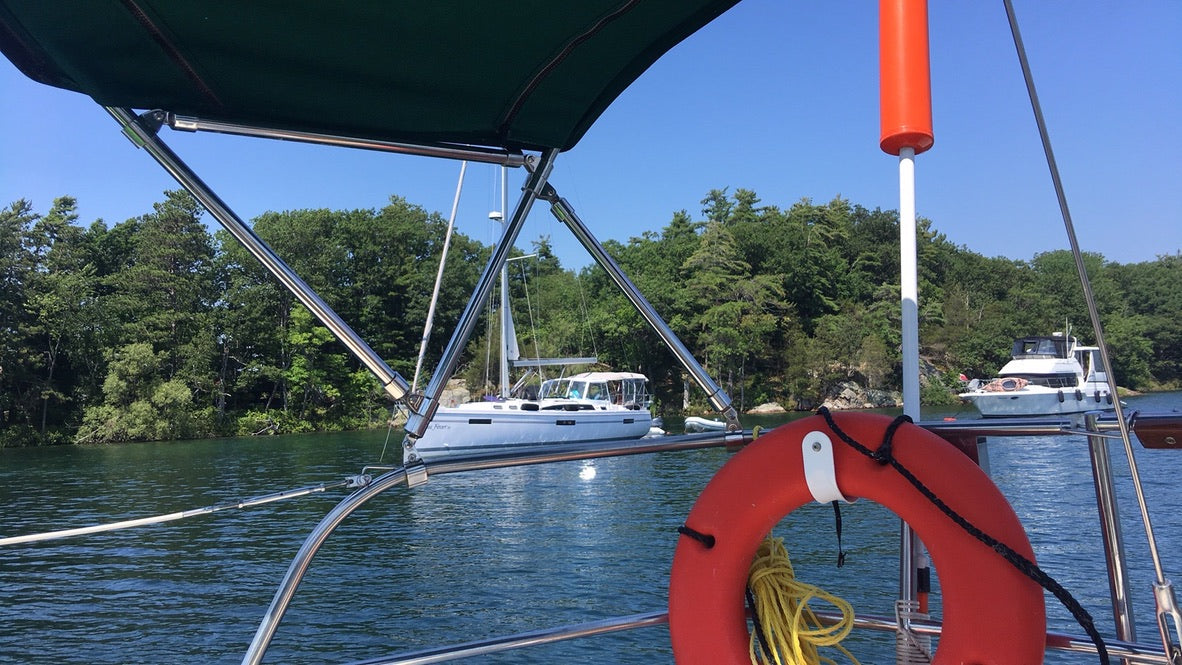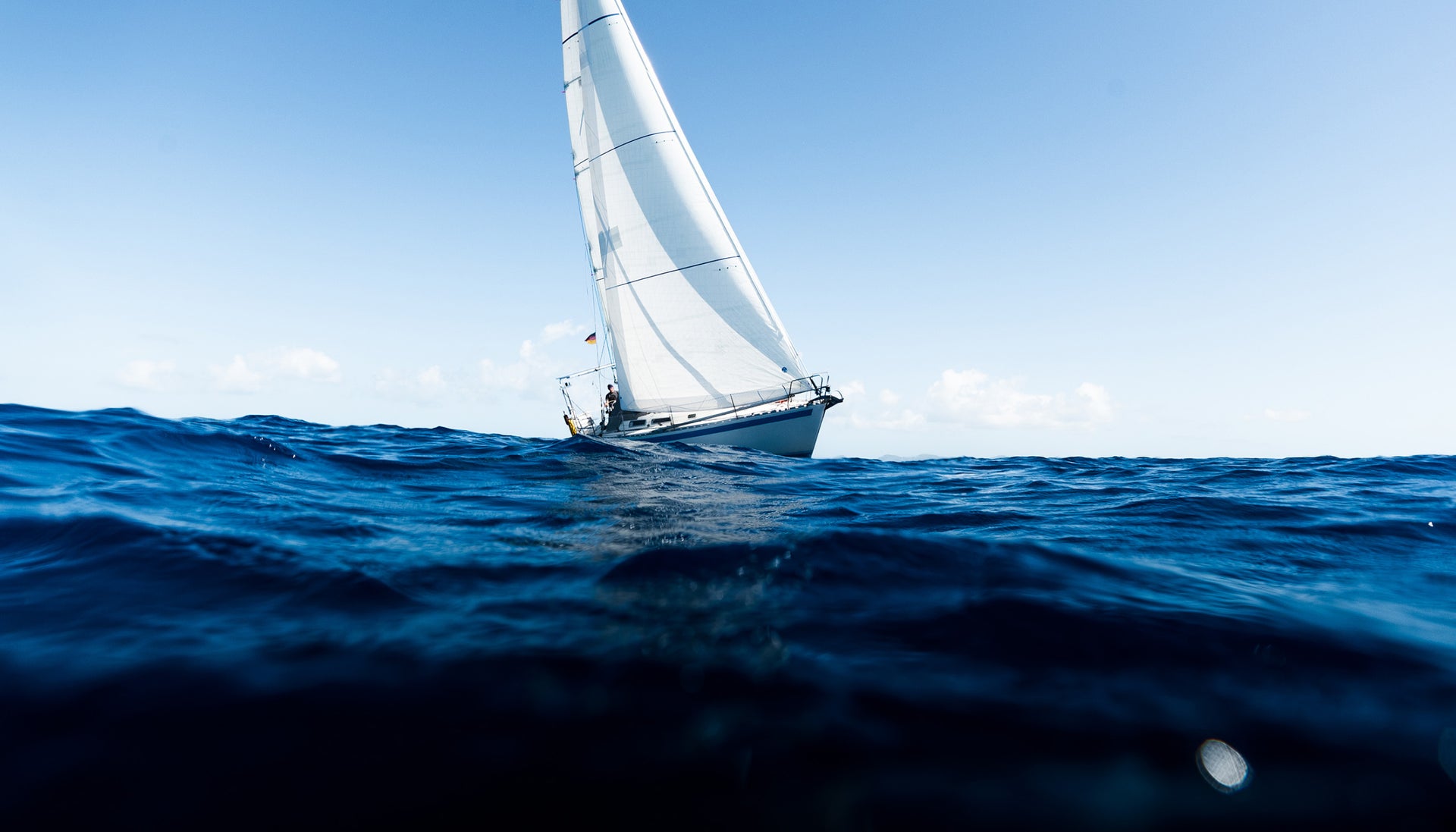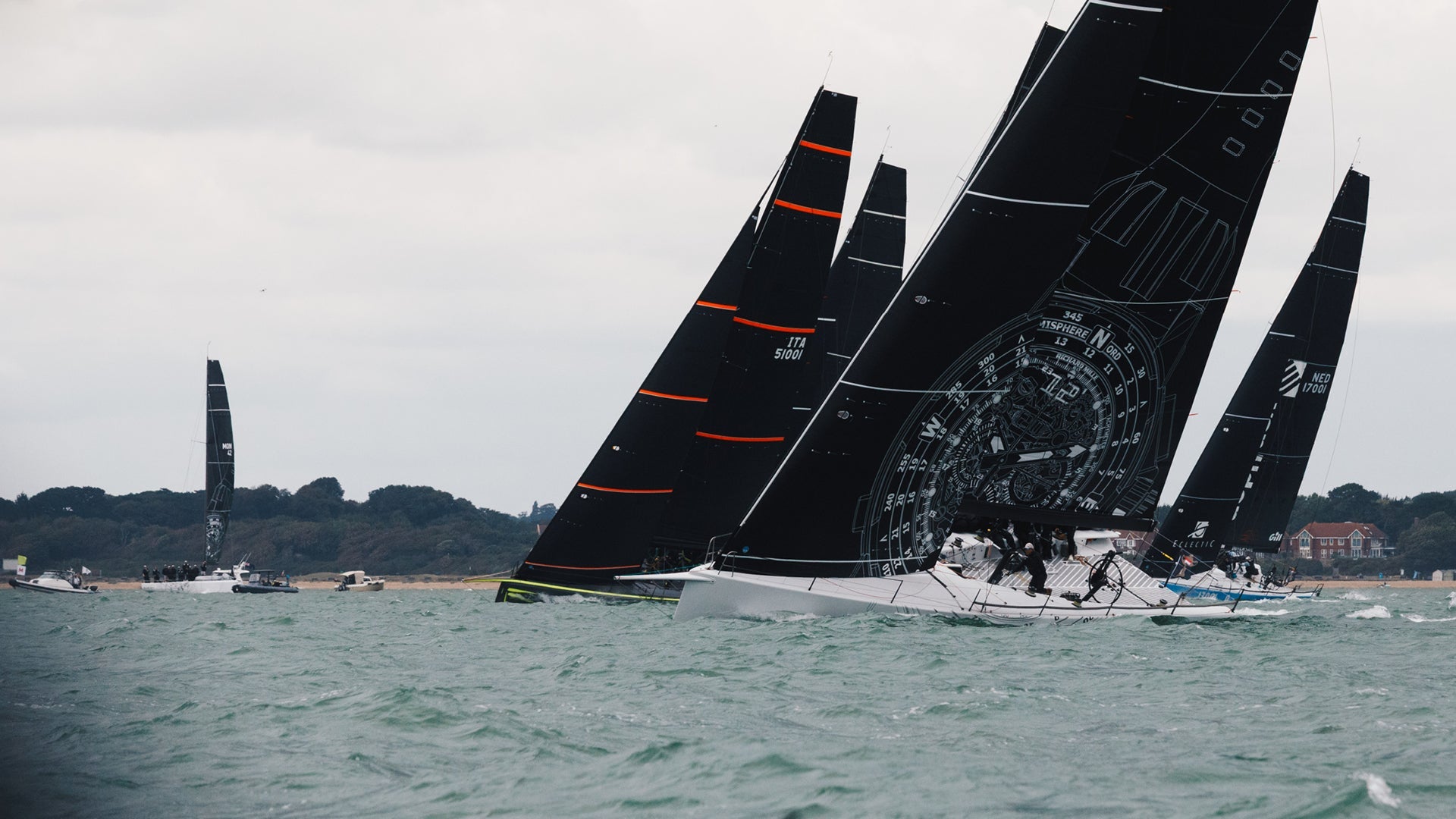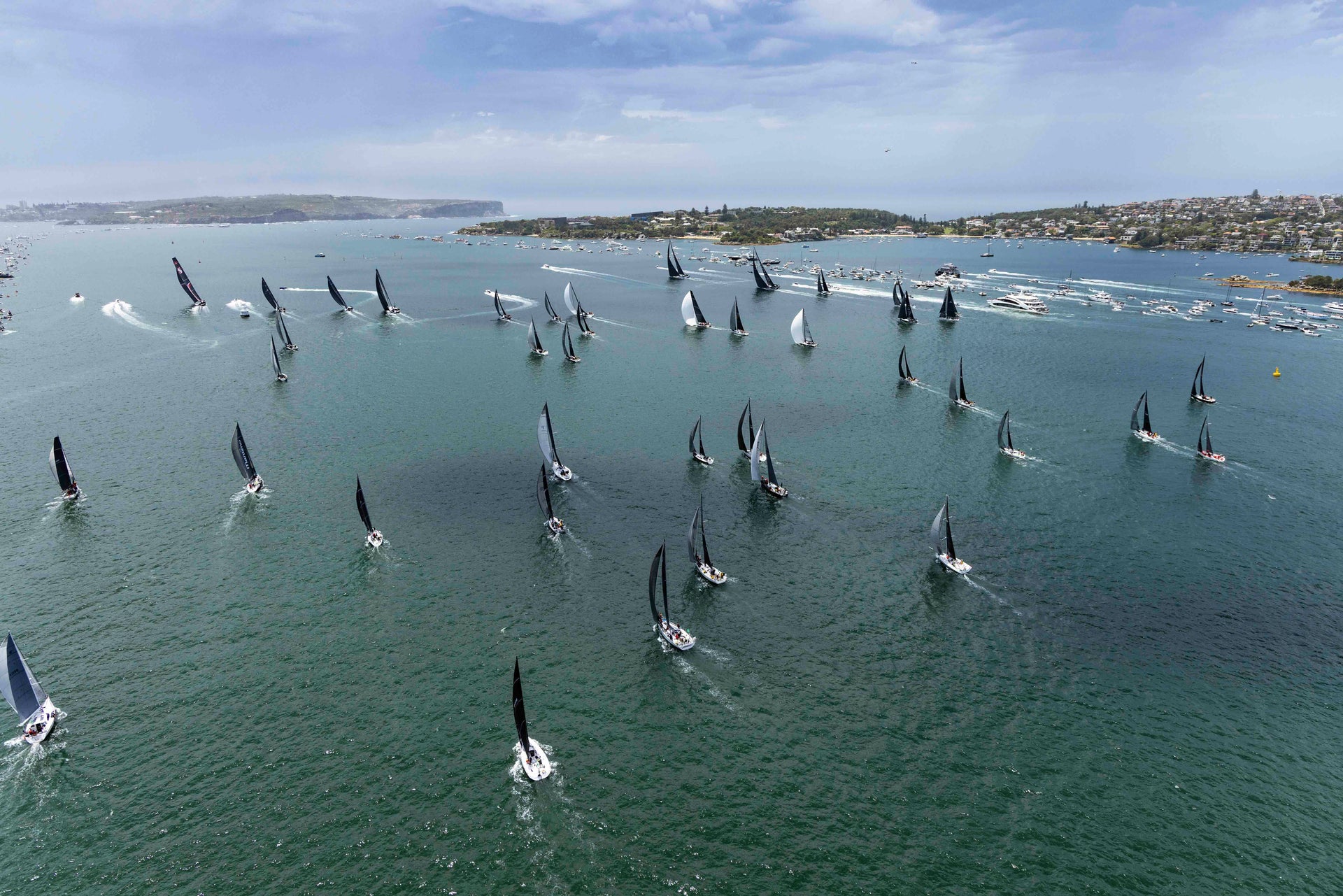CRUISING TO THE 1000 ISLANDS
CRUISING TO THE 1000 ISLANDS
George Jackson Shares His Favourite Must-See Attractions
 While self-isolating, dreaming of sailing again, open up your favourite navigation app, Navionics, perhaps. Or Google Earth. Scroll over to eastern Lake Ontario...Take note of the north shore of eastern Lake Ontario. Within a long day's sail, the varied and vast cruising grounds of eastern Lake Ontario and St. Lawrence river await. Beginning in Brighton and ending passed Brockville, there are so many coves, harbours, open reaches, and terrific freshwater sailing to be had. So many different itineraries could be plotted. A great feature of cruising these waters is flexibility due to changes in weather. Protected waters can be found easily, no matter the wind direction.
Last summer, asked by a former Royal Canadian YC commodore to join a portion of his summer cruise to the 1000 Islands, my backyard, I could not refuse his invitation.
He sailed his Niagara 35 down from Toronto to Belleville. I took the train from Kingston. A VIA train is a great way to shuttle back and forth along this cruising route. Also joining us was another friend of the Commodore, a former BC Ferries captain who had long wanted to sail among the 1000 Islands.
My skipper's goal was to get to the granite-featured, historic 1000 Islands straight away. Had he wanted to explore "the county" as Torontonians call it, Prince Edward County is an impressive cruising ground -- Picton. Adolphus Reach. Waupoos Island. Prince Edward Bay. Prinyer's Cove. A region distinguished by limestone cliffs, fresh, clear water, gravelly beaches and good anchorages. Instead, we pressed on.
Towards Kingston, Amherst Island provides excellent protection from the swells but ample water to sail back and forth between the mainland and the north shore of Amherst. Here too are some lovely anchorages -- Kerr Bay, Loyalist Cove, Preston Cove and Collins Bay – all before Kingston is even in sight. For the more adventuresome, pass through the Upper Gap and make Main Duck Island and School House Bay a destination before heading back to Kingston on what could be a downwind sleigh ride from The Ducks given the prevailing southwest winds.
While self-isolating, dreaming of sailing again, open up your favourite navigation app, Navionics, perhaps. Or Google Earth. Scroll over to eastern Lake Ontario...Take note of the north shore of eastern Lake Ontario. Within a long day's sail, the varied and vast cruising grounds of eastern Lake Ontario and St. Lawrence river await. Beginning in Brighton and ending passed Brockville, there are so many coves, harbours, open reaches, and terrific freshwater sailing to be had. So many different itineraries could be plotted. A great feature of cruising these waters is flexibility due to changes in weather. Protected waters can be found easily, no matter the wind direction.
Last summer, asked by a former Royal Canadian YC commodore to join a portion of his summer cruise to the 1000 Islands, my backyard, I could not refuse his invitation.
He sailed his Niagara 35 down from Toronto to Belleville. I took the train from Kingston. A VIA train is a great way to shuttle back and forth along this cruising route. Also joining us was another friend of the Commodore, a former BC Ferries captain who had long wanted to sail among the 1000 Islands.
My skipper's goal was to get to the granite-featured, historic 1000 Islands straight away. Had he wanted to explore "the county" as Torontonians call it, Prince Edward County is an impressive cruising ground -- Picton. Adolphus Reach. Waupoos Island. Prince Edward Bay. Prinyer's Cove. A region distinguished by limestone cliffs, fresh, clear water, gravelly beaches and good anchorages. Instead, we pressed on.
Towards Kingston, Amherst Island provides excellent protection from the swells but ample water to sail back and forth between the mainland and the north shore of Amherst. Here too are some lovely anchorages -- Kerr Bay, Loyalist Cove, Preston Cove and Collins Bay – all before Kingston is even in sight. For the more adventuresome, pass through the Upper Gap and make Main Duck Island and School House Bay a destination before heading back to Kingston on what could be a downwind sleigh ride from The Ducks given the prevailing southwest winds.
 I'll pass over Kingston for now. But let me say this, try to book ahead if you want to stay at any of the clubs or marinas in the area. Spots get booked up. This holds for the marinas in both the US and Canadian waters along the St. Lawrence.
Kingston is called the Limestone city, yet you quickly leave the grey rock behind and begin to sail through what is known as the Frontenac Arch or Axis. The Axis is an exposed strip of Precambrian granite rock that links the Canadian Shield from Algonquin Park through to the Adirondacks. It's this feature that makes a tour of the 1000 Islands so unique yet like Manitoulin Island or the East Coast. Once again, so many options. So little time.
A word of extra caution. No doubt, you have had a proper study of the charts as you have sailed or motored to this point. In these waters, safe, damage-free passage making requires vigilant navigating. Use the guides. Use your mobile Navionics app, use your eyes and binocluars but know where you are and where you are going. As they say, the water can get hard fast if one is not paying attention.
What attracts many mariners is the Thousand Islands National Park system, established in 1904, formerly known as the St. Lawrence Islands National Park. The park consists of 21 islands plus many smaller islets. Depending on the island, there may be a dock or a mooring ball or a quiet cove to anchor. Life on the hook is idyllic. But be sure to have screens, it's a little buggy at dawn and dusk. On either the north or south mainland shores are pretty towns and villages each with services but also fun things to do. For instance, Gananoque has its 1000 Island Playhouse, a summertime, waterside, theatre. Clayton, NY, has the Antique Boat Museum. Grab your guide book or search Google and plan away.
As you cruise into the islands, there are abundant sailing opportunities, but they may be limited depending on wind direction, strength and your next destination. Even with good winds, you may find yourself motoring more, so keep an eye on your fuel, oil levels and water discharge although the water is pristine, there is floating debris, like plastic bags lurking to clog water-intakes.
The 1000 Islands are really closer than you think. The sailing is good, with lots to see and do.
All this to say, go! Go as soon as you can. Who knows when, but plan and go.
I'll pass over Kingston for now. But let me say this, try to book ahead if you want to stay at any of the clubs or marinas in the area. Spots get booked up. This holds for the marinas in both the US and Canadian waters along the St. Lawrence.
Kingston is called the Limestone city, yet you quickly leave the grey rock behind and begin to sail through what is known as the Frontenac Arch or Axis. The Axis is an exposed strip of Precambrian granite rock that links the Canadian Shield from Algonquin Park through to the Adirondacks. It's this feature that makes a tour of the 1000 Islands so unique yet like Manitoulin Island or the East Coast. Once again, so many options. So little time.
A word of extra caution. No doubt, you have had a proper study of the charts as you have sailed or motored to this point. In these waters, safe, damage-free passage making requires vigilant navigating. Use the guides. Use your mobile Navionics app, use your eyes and binocluars but know where you are and where you are going. As they say, the water can get hard fast if one is not paying attention.
What attracts many mariners is the Thousand Islands National Park system, established in 1904, formerly known as the St. Lawrence Islands National Park. The park consists of 21 islands plus many smaller islets. Depending on the island, there may be a dock or a mooring ball or a quiet cove to anchor. Life on the hook is idyllic. But be sure to have screens, it's a little buggy at dawn and dusk. On either the north or south mainland shores are pretty towns and villages each with services but also fun things to do. For instance, Gananoque has its 1000 Island Playhouse, a summertime, waterside, theatre. Clayton, NY, has the Antique Boat Museum. Grab your guide book or search Google and plan away.
As you cruise into the islands, there are abundant sailing opportunities, but they may be limited depending on wind direction, strength and your next destination. Even with good winds, you may find yourself motoring more, so keep an eye on your fuel, oil levels and water discharge although the water is pristine, there is floating debris, like plastic bags lurking to clog water-intakes.
The 1000 Islands are really closer than you think. The sailing is good, with lots to see and do.
All this to say, go! Go as soon as you can. Who knows when, but plan and go.
 Learn more about cruising sails to help with your adventure here.
Learn more about cruising sails to help with your adventure here.